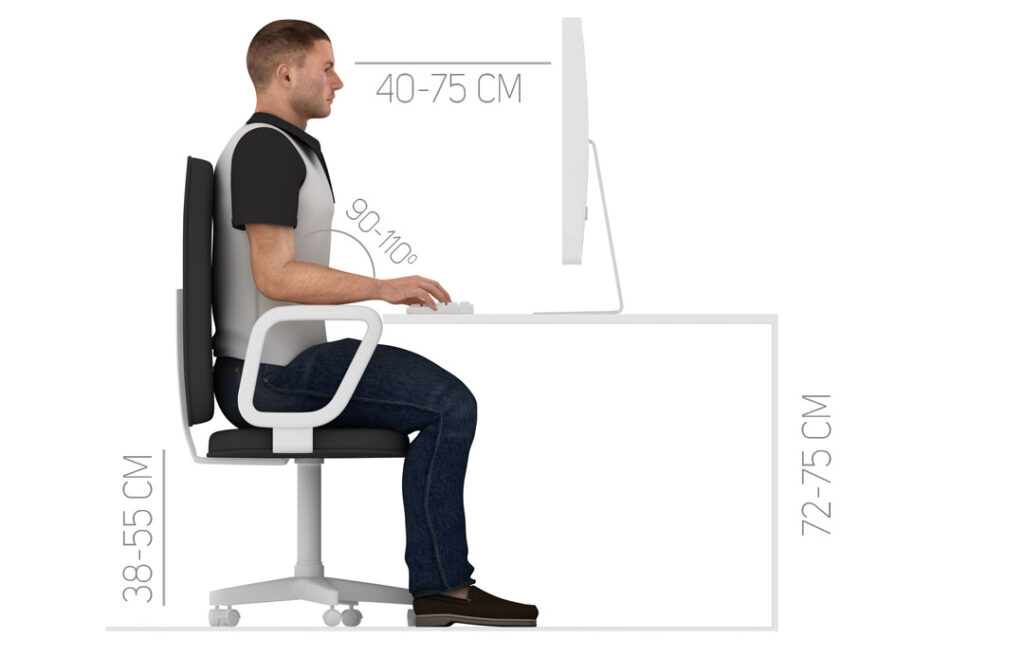Mouse shoulder results from the prolonged use of a mouse and is a common problem amongst PC gamers, and people who need to work on computers non-stop in offices or at home. It is a condition identified as tendinopathy in the medical world. As a result of this condition, persistent pain and discomfort are quite commonly experienced by the individual in the affected shoulder region.
This article will throw light on mouse shoulder, its causes, symptoms, and how to prevent and take care to avoid aggravating the condition.
What is Mouse Shoulder?
In medical terminology, this condition is called a Repetitive Strain Injury or RSI. It results from repetitive motions affecting the shoulder, neck, and back. People who use computers are prone to develop this condition.
Continuous mouse movement involves the use of the palm, fingers, and wrist. Holding and moving the mouse uninterruptedly leads to fatigue affecting the bigger bicep muscles. Consequently, the proximal tendon, a part of the biceps brachii muscle system that encompasses both, the shoulder and the elbow, is affected.
Due to regular and improper use of the bicep, there is an imbalance in muscle contraction that over a period leads to collagen degeneration. This leads to agitating the tendon’s normal fiber orientation. Normal tendon fibers are parallel to each other but in RSI, the fibers are all jumbled up which becomes the main cause of pain making the tendon dysfunctional temporarily.
Causes
The main cause of this condition is the regular use of the computer mouse. There are two main ways that this can cause pain, aches, burning sensation, and soreness in the wrist, shoulders, back, and elbow.
Making small movements with the mouse: Invariably, the main reason for this condition can be attributed to the constant use of computer and mouse for work and play. The mouse that we use with a desktop needs to be positioned, clicked, and scrolled continually with your fingers, and thumb. This makes the small muscles get tired and overworked.
Awkward placement of the mouse: For desk jobs, at home or office, or for gamers, keeping the arm outstretched and unsupported for longer periods is the actual cause of this tendinopathy condition. It happens because the keyboard is placed right in front of the screen while the mouse is usually placed at a ‘not-so-easy to reach’ or comfortable position.
Improper setup of the chair or the work setup also affects the arm. when the chair is too low, the arm needs to be elevated and outstretched to reach and hold the mouse.
Common Symptoms of Mouse Shoulder
- Knotted and tight feeling in the upper back region especially the neck and the shoulder blades.
- Dull headaches.
- A persistent burning sensation in the shoulder region.
- Pain in the front portion of the shoulder of the arm that you use for moving the mouse.
- A tingling sensation or numbness in the fingers and the palm.
How to Correct Mouse Shoulder?

The best way to improve the condition is to exercise. These are simple and easy-to-do exercises and some of these can be done even while sitting.
Correcting Your Posture
Getting the right posture can bring respite from the pain. Here are some exercises that you can do while sitting at your worktable:
- Chin Nods: Sit comfortably on your chair. Pull your chin into the nodding position and hold it in the position for about 20 seconds until you feel the neck muscles working. Repeat it a couple of times.
- Shoulder Setting: Sit comfortably. This exercise involves lowering and raising your shoulders in a range of motion – from the lowest position to lifting it to the maximum limit. Hold in both positions for as long as you can comfortably and then get back to the normal position. The good thing is that you can repeat this exercise as many times as possible during the entire time you are at the desk.
Muscle Contraction Exercises
These exercises are done while standing. You will need dumbbells or weighted objects to do gain from these exercises optimally.
- Arms Front Raise: You need to stand erect and lift a dumbbell or a small object with weight. You can use both your arms to hold the object and raise it in front or use just the affected arm. Ensure that your palms face up and your elbows are straight. Hold your arm/s in the lifted-up position for a few seconds and then return to the starting point. You should ideally repeat this exercise 8-10 times every day.
- Curling Biceps: This exercise is best done on an inclined bench but if you do not have one, you can do it while standing. Take a dumbbell or a weighted object in both arms. Your palm should be facing up. Bend the elbow to curl the shoulders as you bring the dumbbells up. Repeat this 15 times.
Shoulder Stretches
Extension exercises or stretches are good for the shoulders to address the pain and tingling sensation.
- Resisted Row: Stand straight. Take dumbbells in both your hands. Bend forward so that your chest faces the ground. Now, pull the dumbbells toward your abdomen. Hold for a few seconds and return to the starting position. Repeat at least 15 times.
- Sleeper Stretch: Lie down on your side (affected arm). Hold your arm out at right angles to your body. Bend your elbow up at right angles. Now press the forearm with the help of your other arm and bend it down to face the floor. You should be able to feel your shoulder back stretching. Hold for a few seconds and return to the original position. Repeat 3 to 5 times.
Besides exercising regularly, you also need to:
- Keep the mouse while using the computer in an easily accessible position.
- Take a break in between work. Take a walk, climb up and down stairs, etc.
- Try and hold the mouse lightly instead of applying pressure.
Treatment of Mouse Shoulder
- Massage: It can help mitigate pain and increase muscle flexibility in the area.
- Chiropractic Adjustments: You can visit a chiropractor to benefit from manual or automated adjustments. Pain in the shoulder blades, upper back region, back of the neck, joints, and rib cage can be reduced with the right techniques.
- Graston Technique: This method involves the use of specialized medical instruments that help activate the soft tissues. Helps in improving the mobility of the region and reducing pain.
- Soft Tissue Release: This is a massage technique where the therapist works on the shoulder, neck, and upper half to release the knotted tension in the area.
- Heat Therapy: Heat packs for about 10-15 minutes can also provide relief from pain and increases blood flow to the area. Use a damp towel along with the ice pack for more effectiveness.
FAQs
How should I sleep when suffering from mouse shoulder?
You should never sleep on the side of the affected shoulder. Instead, either sleep on your back or sleep on the opposite side. You can place a pillow under the shoulder that is affected while sleeping on your back.
Does an ice pack help in the case of a mouse shoulder?
Do not use ice packs in this condition as they can aggravate the pain. Ice packs help only in the case of inflammation.

